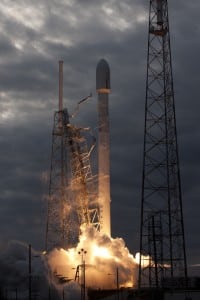
Space Exploration Technologies Corp. (SpaceX) set July 14 for its next shot at launching Orbcomm’s [ORBC] OG2 mission, with July 15 as a backup date. SpaceX scrubbed three launch attempts the weekend of June 30 for various reasons, including poor weather, fluctuations in pressure on Falcon 9’s second stage, and a “concern identified during pre-flight checks,” Orbcomm said. SpaceX President and COO Gwynne Shotwell said June 25 on “The Space Show” Web broadcast that an issue with a thrust vector…













